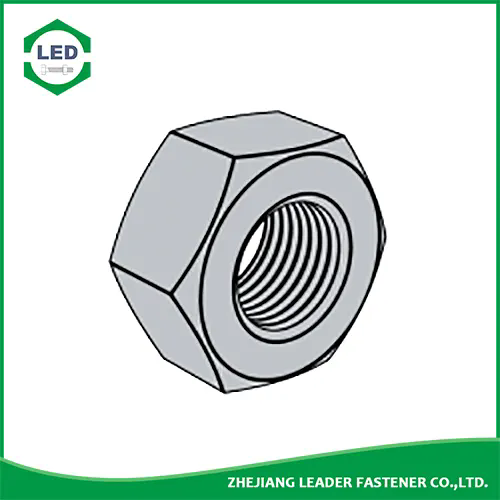What Is a Hex Nut and Why Is It So Important in Fastening?
2025-06-18
When it comes to joining parts together securely, one tiny component plays a big role—the hex nut. You’ve probably seen them countless times, but have you ever wondered what makes hex nuts such a vital part of so many mechanical and structural applications? In this blog, we’ll take a closer look at what a hex nut is, how it works, and why it’s widely used in construction, automotive, machinery, and beyond.

What Is a Hex Nut?
A hex nut is a six-sided fastener with a threaded hole in the center. It’s designed to work with a bolt, threaded rod, or screw to clamp parts together. The hexagonal shape makes it easy to grip with tools like wrenches or sockets from multiple angles, which is especially useful in tight or hard-to-reach spaces.
Hex nuts are available in a wide range of sizes, thread pitches, and materials, making them one of the most versatile fasteners in the world.
Common Applications of Hex Nuts
Hex nuts are used almost everywhere:
Construction: Securing structural steel connections, brackets, and supports.
Automotive: Fastening engine parts, wheels, and chassis components.
Home Improvement: Assembling furniture, mounting hardware, and DIY projects.
Machinery: Joining machine frames, casings, or moving parts.
Electronics and Appliances: Attaching panels or circuit boards inside housings.
Their compatibility with various bolts and washers makes them a go-to fastener in any industry.
Types of Hex Nuts
Not all hex nuts are created equal. Here are a few common types:
1. Standard Hex Nut
The most commonly used type, designed for general-purpose fastening.
2. Heavy Hex Nut
Thicker and wider than standard hex nuts, ideal for high-strength applications.
3. Lock Nut (Nylon Insert or All-Metal)
Features a mechanism to resist loosening due to vibration or torque.
4. Flange Nut
Has a built-in washer-like flange for better load distribution and grip.
5. Jam Nut
A thinner nut used as a locknut when paired with a standard hex nut.
Material and Finishes
Hex nuts are manufactured from various materials, each offering unique benefits:
Carbon Steel: Strong and cost-effective; commonly used with zinc coating to resist corrosion.
Stainless Steel: Excellent for corrosion resistance, ideal for outdoor or marine use.
Brass: Great for decorative or electrical applications.
Nylon-Coated or Galvanized: For added durability and protection in harsh environments.
The finish or coating you choose depends on the application’s environmental conditions and required strength.
Tips for Proper Use
Always match the nut to the correct bolt size and thread pitch.
Use washers to distribute load and prevent surface damage.
Apply the correct torque to avoid stripping threads or under-tightening.
Consider lock nuts or thread-locking compounds in high-vibration areas.
Final Thoughts
Though small in size, the hex nut is a giant in the world of fasteners. Its simple, functional design and wide range of applications make it an essential component in modern engineering and everyday tasks. Whether you’re building a skyscraper or fixing a bicycle, the humble hex nut is likely holding things together behind the scenes.


